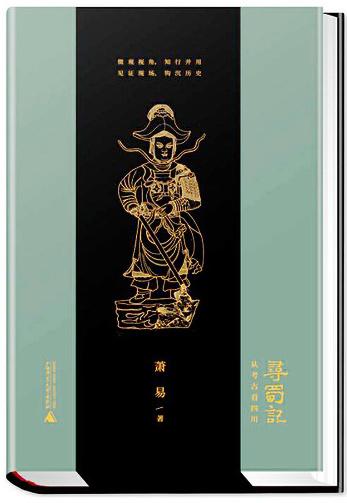
. > WHAT'S NEW > BOOKS
Archaeological perspectives on Sichuan
Author : CHUAN XUAN Source : Chinese Social Sciences Today 2021-04-20

A History of Shu (Sichuan) from an Archaeological Perspective
Mainstream historiography is often written in the form of a general history, and is not regionally specific. For example, the history of the Han Dynasty (206 BCE–220) was condensed into Hanshu (History of the Former Han Dynasty) and Houhanshu (History of the Later Han Dynasty), with few chapters allocated to Shu, an ancient name for present-day Sichuan Province.
A History of Shu (Sichuan) from an Archaeological Perspective, authored by Xiao Yi, a columnist from the journal Chinese National Geography, selects representative archaeological excavations and field sites in Sichuan from recent years, trying to interpret the history of Shu from a microscopic perspective.
The book touches on more than 4,000 years of Sichuan’s history, from the Neolithic Age to the Qing Dynasty (1644–1911). Most archaeological excavations and sites referenced in the book were personally witnessed by the author.
The book exhibits many historical sites in Sichuan. The ancient city of Baodun is the fourth largest prehistoric city in China, which strongly proves that the Chengdu Plain is also an important origin point for civilization. More than 200 gold vessels were unearthed at the Jinsha site, a site which boasts the highest number of gold vessels from the Shang and Zhou dynasties (c. 1600–256 BCE). 24 of the existing 47 Han-Dynasty Que (a ceremonial gate tower) sites are in Sichuan. So far, more than 100 stone coffin portraits have been discovered across the country, 90% of which are in Sichuan. In addition, Sichuan has the largest number in terms of cliff tombs and unearthed brick portraits in China.
Wanfo Temple in Deyang City fills a gap in statues which represent the Southern Dynasty (420–589). Luzhou City is among areas with highest concentrated Song-Dynasty (960–1279) tombs in Sichuan, and even in China, with Lu and Hejiang counties ranking top. Sichuan has unearthed nearly 500 pieces of gold and silver that were stored in cellars, accounting for about half of the Song gold and silver artifacts in the country. Among this, Pengzhou, a city which unearthed 350 pieces, has the largest collection of Song gold and silver artifacts in cellar storage. Lu County of Luzhou City has 141 Ming and Qing (1368–1911) dragon bridges, the most concentrated area in China.
Sichuan is one of China’s provinces with highest grotto distribution points and grotto numbers. Most Buddhist grottoes in Sichuan were made after the Tang Dynasty’s (618–907) peak, which represents the second half of Chinese grotto art. Sichuan is also one of the regions which hosts the most concentrated and enduring Taoist grottoes.
Ye Shengtao made Chinese fairy tales from a wilderness
Ye Shengtao (1894–1988) created the first collection of fairy tales in the history of Chinese children’s literature...
-
How northern ethnicities integrated into Chinese nation
2023-09-18
-
Mogao caves
2023-09-12
-
Mogao Grottoes as ‘a place of pilgrimage’
2023-09-12
-
Time-honored architectural traditions in China
2023-08-29
-
Disentangling the civilizational evolution of China
2023-08-28
-
AI ethics in science fiction
2023-08-23













 2011-2013 by www.cssn.cn. All Rights Reserved
2011-2013 by www.cssn.cn. All Rights Reserved